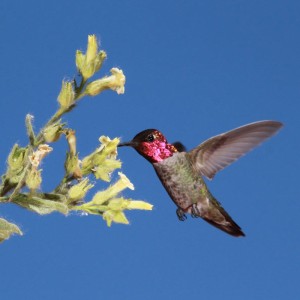Evolution of sweet taste perception in hummingbirds The adaptation to thrive in a nectarivorous niche

Sensory systems, such as olfactory and gustatory systems, define an animal’s capacity for perception, and can evolve to promote survival in new environmental niches. For example, the ancestors of birds lost the sweet taste receptor (T1R2-T1R3). Nevertheless, some bird species, such as hummingbirds, display high behavioral affinity for sugars found in nectar, raising questions of how specialized nectar-feeders like hummingbirds sense sugars.
Associate Professor Takumi Misaka and co-researcher, Yasuka Toda, at the University of Tokyo Graduate School of Agriculture and Life Sciences, in collaboration with groups in Harvard University and other universities, have examined the avian taste receptors and uncovered the ancestral umami receptor (T1R1-T1R3) was re-purposed in hummingbirds to function as a sugar receptor. Furthermore, they revealed that the molecular recognition properties of T1R1-T1R3 guided taste behavior in hummingbirds.
These findings suggest that changing taste receptor function enabled hummingbirds to perceive and utilize nectar since their divergence from insectivorous swifts, which are their closest relatives, facilitating the massive radiation of hummingbird species.
Press release (Japanese)
Paper
Baldwin, M.W., Toda, Y., Nakagita, T., O’Connell, M.J., Klasing, K.C., Misaka, T., Edwards, S.V., Liberles, S.D.,
“Evolution of sweet taste perception in hummingbirds by transformation of the ancestral umami receptor”,
Science 345 (2014): 929-933, doi: 10.1126/science.1255097.
Article link
Links
Graduate School of Agricultural and Life Sciences
Department of Applied Biological Chemistry, Graduate School of Agricultural and Life Sciences








